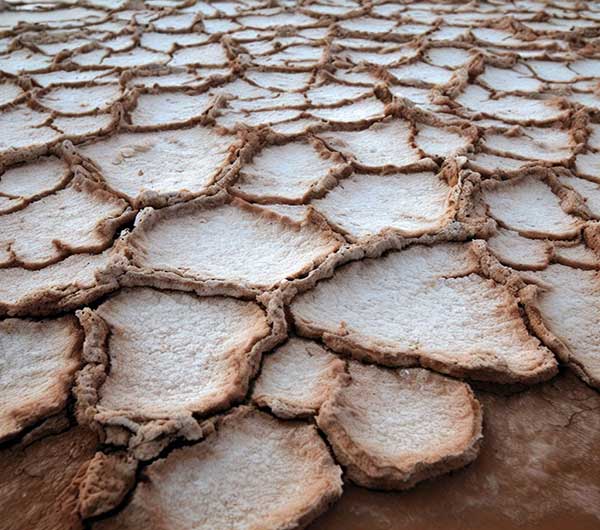Soil salinity is a challenge for sustainable agriculture
Saline soil and agriculture: Today, agricultural productivity is decreasing due to the negative effects of climate change, increasing global temperature, and increasing environmental stress. Therefore, in order to achieve sustainable development in agriculture and increase agricultural products to feed all the people of the world, it is necessary to use appropriate solutions and environmentally friendly techniques to reduce the adverse effects of these stresses on the plant. Soil salinity is a problem for agricultural productivity worldwide.
Salinity tolerance table of plants
Salinity tolerance relative to the amount of exchangeable sodium
| Salt resistant | Semi-resistant to salt | Sensitive to salinity |
| Alfalfa | carrot | Avocado |
| barley | clover | Small seeded fruit |
| Beet | Lettuce | green beans |
| Sugar beet | onion | corn |
| cotton | Radish | Pea |
| Types of fodder of the wheat family | Rice | Crepe fruit |
| tomato | orange |
|
| Common Vetch | peanut |
|
| lentils |
Osmotic stress due to salinity
According to the available reports, crops grown in salt-affected soils are exposed to osmotic stress, unsuitable soil physical conditions, nutritional disorders and toxicity, and reduced crop yields. Limiting crop losses due to salinity stress is an important area of concern to deal with the background of increasing food demands. New agricultural technologies are needed to improve food production in salt-affected soils. Haloteler tolerant rhizosphere bacteria are beneficial to plants due to mechanisms such as root system development, soil structure improvement, increased water and nutrient absorption, decreased sodium absorption, reduced negative effects of ethylene stress and increased gene expression, increasing plant tolerance to salinity. be. It plays a role in resistance to salt stress. Microbial inoculation to reduce stresses in plants can be a more cost-effective environmentally friendly option that can be available in a shorter time frame. Such inoculations help to develop sustainable agriculture under salinity stress conditions. In general, soil profile is very important in sustainable agriculture.
What is soil salinity?
The distinguishing feature of this soil from the point of view of agriculture is that it contains enough neutral soluble salts to negatively affect the growth of more crops. For the purposes of the definition, which have an electrical conductivity of saturated extract greater than 4 decisiemens/m at a temperature of 25°C. This value is generally used worldwide, although the Soil Science Association of America Terminology Committee has lowered the boundary between saline and non-saline soils to 2 dS/m in saturated extract. The soluble salts that are usually present are chlorides and sulfates of sodium, calcium, and magnesium. Nitrates may rarely be present in significant amounts. Sodium and chloride are by far the most dominant ions, especially in highly saline soils, although calcium and magnesium are usually present in sufficient amounts to meet plant nutrient requirements. Many of them contain significant amounts of gypsum in the profile. Soluble carbonates are not always present. The pH value of saturated soil paste is always less than 8.2 and often close to neutral.
Characteristics of saline soils
It keeps the excess salts in a coagulated state so that they generally have good physical properties. The structure is generally good and the tillage and water permeability characteristics are even better than non-saline soils. However, when washed with low-salt water, some saline soils tend to disintegrate and thus have low permeability to weather, especially when the soils are heavy clays. Leaching may also cause a slight increase in soil pH due to reduced salt concentration, but saline soils, as will be shown later, rarely become highly sodic during leaching if there is adequate drainage.
Ways to overcome salinity in agriculture
In field conditions, this type of soil can be recognized by the spotted growth of crops and often by the presence of white salt crusts on the surface. When the salt problem is mild, growing plants often have a blue-green color. Barren spots and plant growth may appear on grain or forage crops grown in saline areas. The extent and abundance of empty spots is often an indication of salt concentration. If the salt level is not high enough to cause barren spots, the appearance of the crop may be irregular in terms of vegetative vigor. The use of some fertilizers and petrochemical products and some acids can reduce salinity.
Detection of saline soil in fields
However, a moderate amount, especially if it tends to be uniform throughout the field, can often go undetected because it causes no apparent damage other than limited growth. The leaves of plants growing in salt-contaminated areas may be smaller and darker blue-green in color than normal leaves. Increased succulentness is often caused by salinity, especially if the concentration of chloride ions in the soil solution is high. Plants in salt-affected soils have a similar appearance to plants growing under moisture-stressed (drought) conditions, although wilting is much less because the osmotic potential of the solution usually changes gradually and the plants adjust their internal salt content sufficiently. and you avoid wilting.
Effect of salinity on plants
Symptoms of specific element toxicity, such as leaf margin or tip burn, usually occur only in woody plants. Chloride, sodium, and boron ions are elements commonly associated with toxic symptoms. Non-woody species may often accumulate as much or more of these elements in their leaves without visual damage as woody species.
